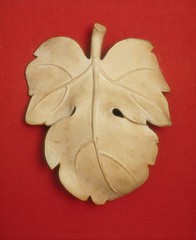By Stuart Frost
 The Cast Courts at the V&A are one of the most extraordinary museum spaces anywhere in the world. Whilst the V&A’s collections of original medieval and Renaissance works are renowned, its remarkable collection of nineteenth century copies of sculptures are perhaps less well known. The majority of the plaster casts and electrotypes are of medieval and Renaissance works, reflecting Victorian taste.
The Cast Courts at the V&A are one of the most extraordinary museum spaces anywhere in the world. Whilst the V&A’s collections of original medieval and Renaissance works are renowned, its remarkable collection of nineteenth century copies of sculptures are perhaps less well known. The majority of the plaster casts and electrotypes are of medieval and Renaissance works, reflecting Victorian taste.
Visitors to the Cast Courts at the Museum can see reproductions of some of the most well-known works of the period standing side-by-side, including Michelangelo’s vast David, arguably the most famous sculpture in the world.
Casts were once a relatively common sight in museums where they were seen as valuable teaching tools. In the early 20th century, unfortunately, many collections of casts were disposed of and destroyed. Other copies of David were not so fortunate as the V&A’s and no longer survive.
Casts came to mind as I sat down to write this entry because I recently saw one of my favourite objects, a plaster cast fig-leaf, in an unfamiliar context. The leaf is being used as the main image in current promotional material for a forthcoming temporary exhibition at the Barbican Art Gallery, Seduced: Art and Sex from Antiquity to Now (12 October 2007 – 27 January 2008). The story of the relationship between art, sex, society and censorship should make for a fascinating exhibition and it’s one I’m looking forward to seeing.
 The fig-leaf is usually displayed at the V&A in a case on the back of the pedestal for Michelangelo’s David. It is easy to miss in this location which is a shame as it has a good story attached to it. The forthcoming exhibition at the Barbican should help raise its profile. Anecdotal information links the creation of the fig-leaf to Queen Victoria’s first viewing of the copy of David. She apparently found the nudity of the figure shocking. The cast was used to cover the genitals of David during royal visits, and was last used in the time of Queen Mary (1867-1953).
The fig-leaf is usually displayed at the V&A in a case on the back of the pedestal for Michelangelo’s David. It is easy to miss in this location which is a shame as it has a good story attached to it. The forthcoming exhibition at the Barbican should help raise its profile. Anecdotal information links the creation of the fig-leaf to Queen Victoria’s first viewing of the copy of David. She apparently found the nudity of the figure shocking. The cast was used to cover the genitals of David during royal visits, and was last used in the time of Queen Mary (1867-1953).
The addition of fig-leaves to nude statues was apparently not uncommon in the nineteenth century, nor was the over-painting of troublesome areas of anatomy. In some instances access to objects was even restricted. Attitudes to sex and sexuality have been very different in the past, whether in ancient Greece, Renaissance Florence or Victorian Britain. Whilst attitudes can change significantly over time, surely it is impossible to imagine a situation in the future where David’s fig-leaf might need to be brought out of retirement?